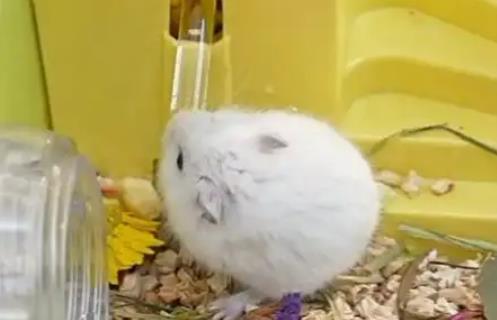I. Configuration of the Living Environment
Choice of Cage
The bottom area of the cage should be at least 40cm × 30cm (for dwarf hamsters) or 50cm × 40cm (for Syrian hamsters). A multi-layer design is recommended to meet their activity needs.
Acrylic or special plastic cages are preferred. Avoid wire cages to prevent the risk of the hamsters' feet getting caught.

Bedding and Cleaning
Lay 5-10 centimeters of dust-free wood shavings or paper cotton. Bedding materials containing harmful substances such as phenols, like pine and fir wood shavings, are prohibited.
Clean the areas that are wet with urine every day. Replace half of the bedding every week, and thoroughly disinfect the cage once a month.
Environmental Requirements
Place the cage in a dark, well-ventilated area away from noise. Keep the temperature between 20-28°C and avoid large temperature differences.
II. Diet Management
Main Food and Nutrition
Choose special hamster food (such as Belgian or German brands). Differentiate between dwarf hamster food and Syrian hamster food according to the hamster species.
Supplement an appropriate amount of protein. You can feed mealworms, boiled egg whites, or dried cheese.
Supplementary Food and Taboos
Vegetables and fruits: Carrots, broccoli, apples (with the core removed), etc. Avoid toxic foods such as citrus fruits, onions, and chocolate.
Replace the drinking water with cooled boiled water or mineral water every day. Use a water bottle with a rolling ball to prevent contamination.
III. Key Points of Daily Care
Cleanliness and Hygiene
Hamsters should not be washed with water. Use special bathing sand to clean them (2-3 times a week) and observe their behavior of rolling in the sand.
Regularly check if there is any moldy food in the food bowl and the nest. Clean it up in a timely manner to prevent the growth of bacteria.
Exercise and Facilities
Provide facilities such as a running wheel and a tunnel to meet their daily exercise needs and prevent obesity and the accumulation of stress.
IV. Health Management
Teeth Grinding Needs
Provide apple wood or special teeth grinding sticks. Avoid using items containing chemical substances (such as bamboo chopsticks).
Disease Prevention
Pay attention to the length of their teeth, the condition of their eyes, and the quality of their fur. If any abnormalities are found (such as loss of appetite or rapid breathing), seek medical attention in a timely manner.
Keep them warm in winter (you can place a warming pad), and avoid direct exposure to high temperatures in summer. Keep the environment stable.
V. Interaction and Behavioral Norms
Feeding Principles
Hamsters must be kept alone (observe Roborovski hamsters carefully). This is to prevent fighting or uncontrolled reproduction.
Building Trust
Avoid direct contact in the initial stage. Let the hamsters get familiar with the owner's smell through feeding and gentle interaction.
Do not disturb the hamsters when they are sleeping. Keep the environment quiet to reduce stress reactions.
Through the above comprehensive management, it can help hamsters maintain a healthy state and extend their lifespan to 2-3 years.
